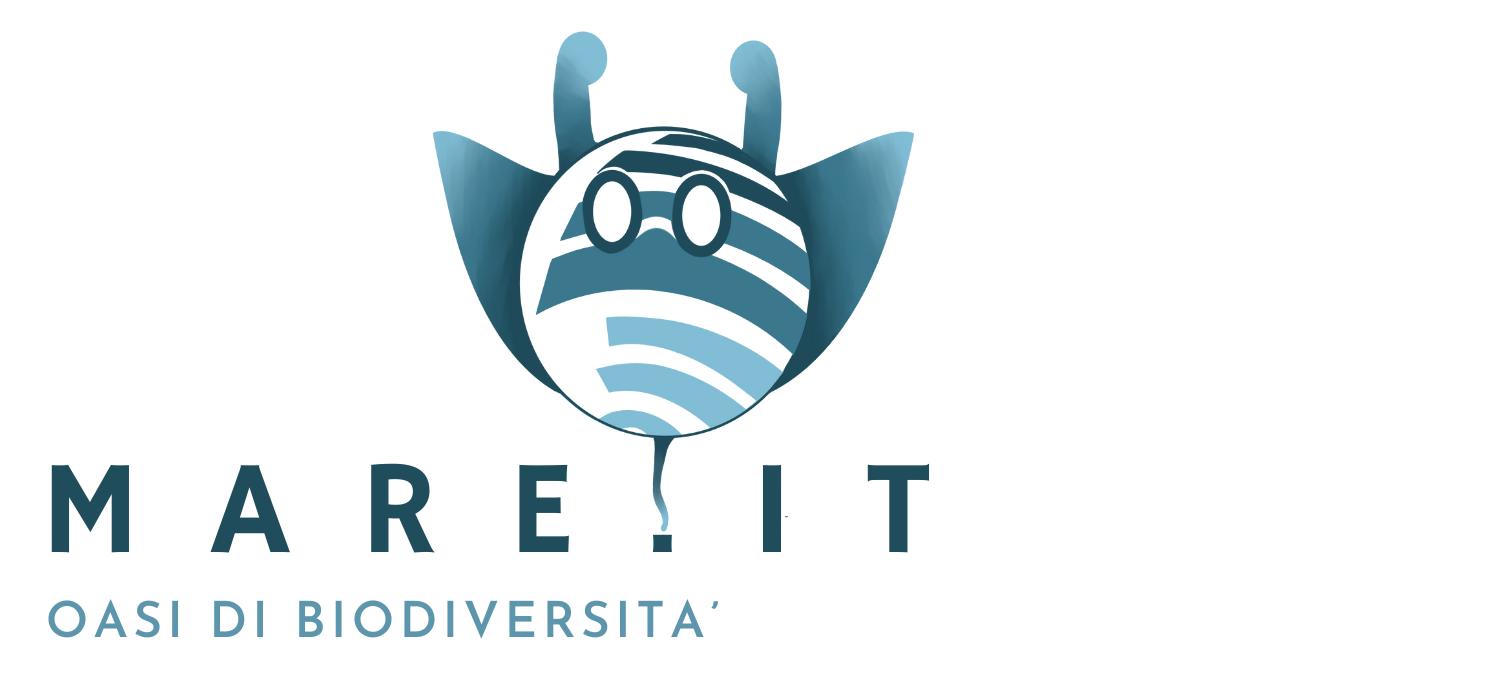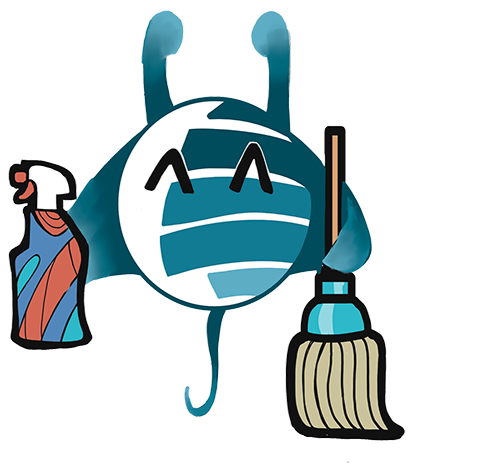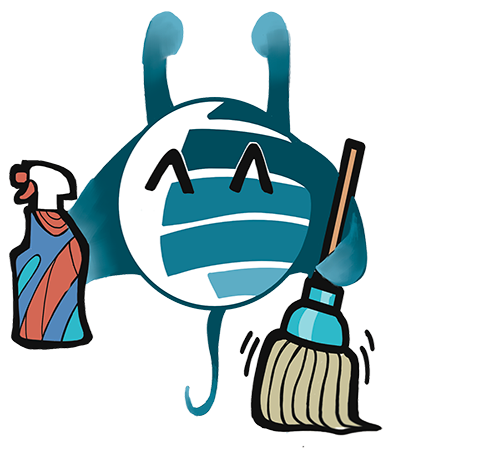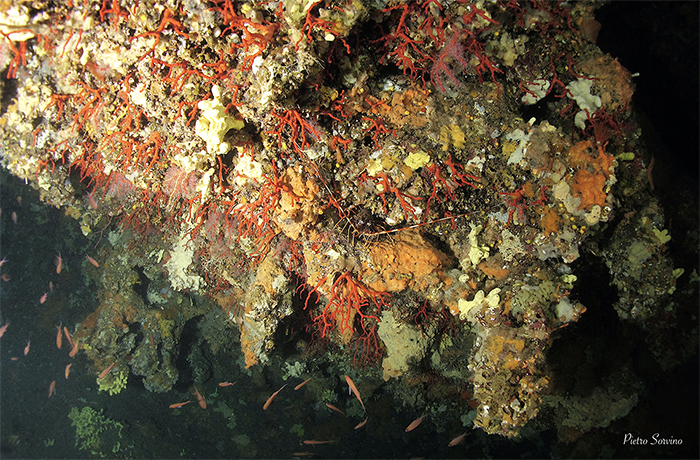Its bright orange color stands out unmistakably on the walls of submerged caves or on rocks populated by corals, gorgonians and other animals characteristic of the coralligenous. What creates that extraordinary special effect in the depths of the Mediterranean and in some areas of the eastern Atlantic is not the single specimen of Parazoanthus axinellae, commonly known as yellow cluster anemone, given its tiny size, but the extension of the colonies, which group together thousands and thousands of polyps, fixed to the substrate with a soft and unique stolon.
They are really small, the polyps, just five millimeters in diameter and about twenty in height. Each polyp has a basal part and an erect part that is retractable. The entire body is equipped with stinging cells (cnidocysts) that place the anemone among the Cnidaria or also Coelenterates, because they have a gastric cavity called coelenteron. Belonging to the class of Anthozoa, being a polyp, the anemone is a hexacoral, because it has smooth, threadlike tentacles in number between 24 and 36, therefore multiples of six, arranged in two rows around the mouth and equipped, more than the other parts of the body, with stinging cells. Thanks to the tentacles, the polyps capture the microplankton on which the animal feeds. And precisely to have food available, the species settles in places where the movement of the currents is strong. Another requirement is low light, not by chance Parazoanthus is present in marine cavities or in any case on rocky walls in the shade. The depth varies from 5 to 50 meters mostly, but colonies are found up to 200 meters. Where it encounters favorable conditions, the species expands like a carpet even on very large surfaces. The colonies can merge or split.
The groups include male and female specimens, which reproduce in spring, with the laying of eggs in March. At the end of autumn, planktonic larvae are released from the eggs and are transported by the current to create new colonies.
If they prefer hard and rocky substrate, yellow cluster anemone can also settle on other animals. And their scientific name already reveals a symbiosis with some sponges of the Axinellidae family – Axinella darmicornis and Axinella verrucosa – which are also filter-feeding animals and have the same yellow color. In addition to sponges, anemones also settle on other species of sponges (Petrosia, Agelas and Sarcotragus), on tunicates of the genus Microcosmus and on the yellow gorgonians Eucinella cavolinii and on the white Eucinella verrucosa.




